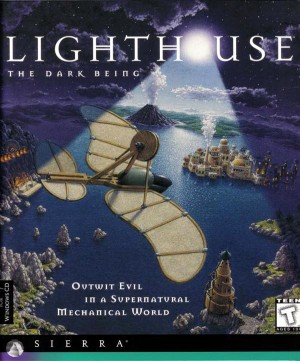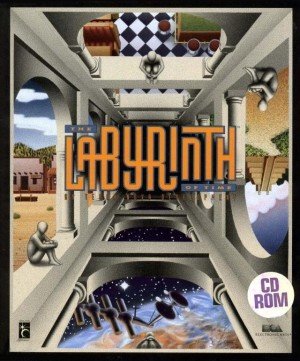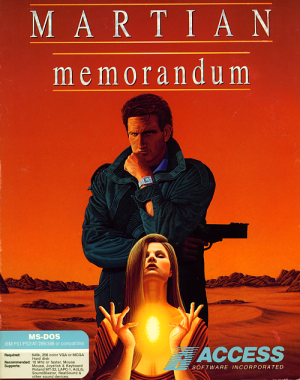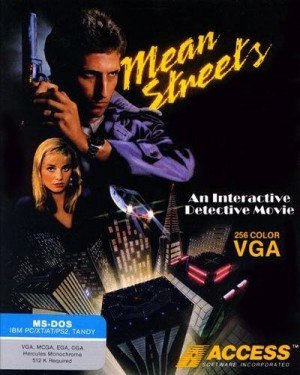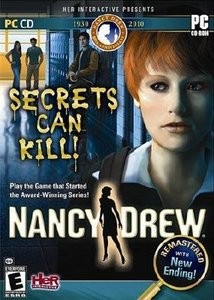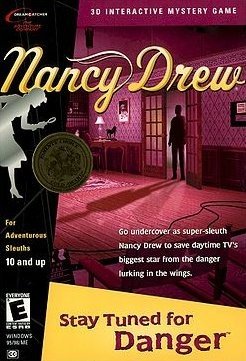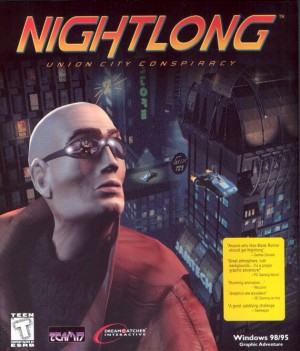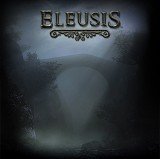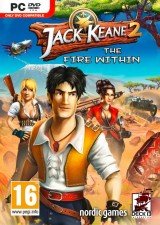Review for Yoomurjak’s Ring page 2
Originally conceived as a tourist promotion for the town of Eger, Hungary, Yoomurjak’s Ring isn’t widely known even in adventure gaming circles, largely because it’s a foreign-language FMV adventure that hasn’t been fully localized for international release. But while most games confronted with such obstacles disappear from English-speaking markets forever, independent developer Private Moon Studios (better known for its ongoing AGON series) decided to push ahead with a subtitled download-only version, and adventure fans can be happy they did. It is a bit rough around the edges at times, but it’s a rare FMV adventure in an age when they’re rarely made anymore, and one of the more successful ones at that.
At the start of Yoomurjak’s Ring, journalist Jonathan Hunt is aboard a train, having left a failed relationship in New York to visit the birthplace of his mother in Hungary. Motivated to make the trip by her recent death, Jonathan plans to visit Eger, the city chronicled in his favourite book “The Stars of Eger”, and he brings along his great-grandfather Samuel’s copy to keep him company. Inside this aged book, however, is a pair of mysterious letters between Samuel and a Hungarian researcher named Pál Ábray, dated 1898. In this correspondence, Ábray claims he has discovered how to travel through time. These letters intrigue Jonathan, and though skeptical, he begins to wonder if time travel really exists. Could it have been discovered almost a century ago by a little known – some say mad – researcher in Hungary? And why were these letters put into this book? Could “The Stars of Eger” have something to do with the mystery of the letters?
Players will want to read the selected excerpts from “The Stars of Eger” and the accompanying letters, which can be found in the inventory right from the outset, but be aware that reading the book passages will seem a little surreal, as the prose seems to jump from topic to topic, making it hard to follow the thrust of the story at times. This is further complicated by the fact that it was obviously written in Hungarian and translated into English, leaving words you won’t understand (“janissar agha”, anyone?) and a number of foreign names that will be hard to remember for English speakers. However, the initial confusion is not insurmountable. The book, as well as most of the text you will read throughout the game, does fall prey to a few errors and oddities, but on the whole the translation is quite well done, which is crucial since that’s the only way to follow the story.
After arriving at his hotel in Eger, Jonathan decides to start looking into the letters, and as luck would have it, he soon meets Juli at the tourist information office. Juli is a local guide and clearly a possible love interest, and while getting a map of the town, Jonathan mentions what he is looking for. Though Juli is unfamiliar with the name, an older man browsing brochures in the office says he knows of Pál Ábray. This gentleman turns out to be the grandson of Ábray’s assistant – an assistant that happened to mysteriously disappear when Ábray started running his time travel experiments. He has been trying to uncover the truth ever since, believing Ábray did invent time travel, and that his grandfather travelled through time to gather historical information for “The Stars of Eger”. In fact, he believes the fictional hero of the story, Yoomurjak, was actually based on his grandfather’s time-travelling exploits.
Thinking these new letters provide the much-needed missing link, he invites Jonathan to aid him in his quest, but before they can join forces, the old man dies of a heart attack, leaving Jonathan to pick up the pieces and unravel the mystery alone. Unfortunately for Jonathan, there are more obstacles to contend with than he realized, as he’s soon threatened by a shadowy organization that doesn’t want him looking into Pál Ábray’s invention. This premise hooked me right away. Obviously much more than a tourism vehicle, I wanted to find out more, and I think most players will feel the same way. There are hints of danger and intrigue in his adventure, but there are cultural and personal elements as well, as Jonathan uncovers a lot of Eger’s history in his search, and even falls in love along the way. Too many adventures these days have thin, clichéd storylines, but Yoomurjak’s Ring offers a complex story, including over a dozen live-action characters to interact with and an entire town to explore.
Thankfully, Jonathan has Juli on his side, and her knowledge of Eger and its people proves invaluable to him as he begins following the old man’s clues. Juli acts as a sort of Eger encyclopedia for Jonathan, pointing him in the right direction and often providing him with information about a location or person, and he returns to her often to get more details. But there are many others for Jonathan to meet in his travels, from Laci-Laszlo Czifra, the Eger historian and Turkish bath lover who helps Jonathan find and interpret a number of important clues, to Klara Bakonyi, a literary professor who helps Jonathan with riddles, and Auntie Iza, the matronly keeper of the Gárdonyi Museum, where a number of puzzles and clues are found. As all dialogue happens in its native Hungarian, that means you will be reading a lot of subtitles to keep up with the conversation and glean the important bits. Luckily, the game comes with a built-in notebook, and every conversation is transcribed there as soon as it happens, so you can refer back to clarify any details later.
This shouldn’t be necessary too often, however. Despite the fact that the speech is in a different language, there is a very natural feel to the characters’ communication. Unlike the many stilted acting performances that helped give FMV a bad name in years past, all the actors here have an easy on-camera presence, and conversations have a fluid pace and flow to them. The acting throughout the game is very believable, and the cinematic style often shows Jonathan interacting with others directly, rather than merely observing them through his eyes, giving players a much stronger association with him as the playable protagonist. It’s a pleasure to guide Jonathan, who is an affable fellow that seems to get along with everyone, and his easy-going but persistent attitude gets him through a lot of tight spots.
This identification with Jonathan is important in the playable sections, as Yoomurjak’s Ring combines its many FMV scenes with a first-person navigation format. Moving node to node, exploring Eger is done by holding the left mouse button and panning the camera in any direction, then clicking an exit cursor in the direction you wish to go. While exploring is an important part of any adventure game, there is a huge amount of territory to cover in Yoomurjak’s Ring. The game has a built-in map, however, which is faster to use than simply walking around. Having said this, it certainly doesn’t hurt to thoroughly explore before becoming too dependent on the map, as I found out to my detriment. Not all the places you need to go will show up on your map just by interacting with the various characters, as a few must be discovered personally before they will be added.
Wandering the streets of Eger is not a chore, of course, as the game is full of interesting places to visit. Dating back through the centuries are many historical buildings such as the Turkish Minaret; the Lyceum-Academy, which contains a huge library and periscope; the Archbishop’s Garden; the Cathedral built in the 1830s; the Turkish baths (my personal favourite place in the game); and even the Castle of Eger. This gothic-styled Castle was originally built in the 1200s, but is most famous for an attack (very important to the game) in 1552, when the Turks were repelled. Interspersed throughout all the cultural monuments are traditional homes and shops and cafes, and the town even has its own McDonald’s. Quite apart from the storyline, the game does indeed do a nice job as a tourist promotion, as the town of Eger is quite lovely and I could see visiting it.
The graphics do a fairly decent job of capturing the appeal of the city. However, each screen seems to have an overly bright quality that washes out some of the colour and detail. This also comes through in the video, which can best be described as faded or muted. This is a small issue, though, as on the whole I think the use of well over an hour of live-action footage in this game is a huge success. It was shot very much like an actual film with characters, locations and objects obviously having been carefully arranged to give the presentation a really natural feel. Even though some of the filmed sequences are quite long, you don’t mind because they are so interesting to watch. However, a quick keystroke lets you jump through a video sequence if you want, which can come in handy when seeing a clip of Jonathan entering the same building time and time again.
Many places in the game feature a pleasant soundtrack of light music that plays sporadically, then fades away. The tunes are quite good, but there is an amazing cacophony of diverse ambient sounds throughout: people eating, talking, walking, and other natural noises of populated areas (a population that is heard more than it’s seen). As you wander the streets, these sounds change to better represent the environment you are in. In a hotel people eat and talk, at a cafe the clinking dishes are moved about, while a city square is replete with the sound of children playing. Combined periodically with the music, I think this is one of the best modulated soundtracks I have heard in a game in quite some time.
The gameplay in Yoomurjak’s Ring is largely inventory-based, so you will pick up items as you move through the story, though interactive locations are limited to key environments, not the numerous stretches of Eger in between. Some items need to be combined to create new objects, but usually you just need to find the right hotspot (door, map etc.) to interact with. Unfortunately, used items don’t disappear from inventory, and other objects like keys have to be used with the proper door each and every time you wish to open it. There aren’t a huge number of articles to carry around, but it would be nice to avoid the clutter and repetition of objects that have served their purpose.
There are also about a dozen standalone puzzles to contend with. I found most of these quite challenging, because there doesn’t always seem to be enough information, exposition, or clues built into the game to solve them intuitively. For at least one puzzle in particular, my issue seemed to be due to a translation problem, as I just didn’t understand what an important clue meant when it was offered, but this certainly is not the case for all the puzzles. A couple others, like a cipher and keypad puzzle, simply rely on players continuing to have faith in being on the right track and keep plugging away without relevant feedback.
In fact, the keypad puzzle to me was the greatest waste of time in the entire game. I have played many games that require players to recreate a series of sounds, which is what you need to do here. The difference is that in other games, the player is given the proper tools to do so. This puzzle isn’t even designed to do that; its central conceit is that you will just keep haplessly pushing buttons while a young boy enters and exits a flat a number of times until suddenly – poof – out of nowhere, Jonathan manages to pull the six-digit code out of thin air. There may have been a way to eventually figure out the code from listening very closely, but it didn’t seem that any amount of extra time would have gotten me any closer to the solution.
And there is a maze. I won’t say much more on this, as it is well known that I think mazes are easy for developers to create, add nothing to a storyline, and are often a pain in the butt for gamers. If you love mazes, please ignore this complaint and enjoy the one here. Other brainteasers in the game like a puzzle involving a brochure are very nitpicky, requiring players to click on the exact right spot to solve. I did this one over and over again, not understanding why I wasn’t getting anything to happen when it seemed I had done everything correctly, so the design here could have made reaching the solution more evident.
The two biggest and most complex puzzles in the game occur towards the end. In a heraldry puzzle, you must put together a family crest based on a poem you find in one of the descendents' homes. This crest is made up of a number of different pieces of heraldic flotsam like tinctures, shields and lozenges, requiring a lot of reading to figure out what goes where and why. This puzzle will take any player a significant amount of time to figure out, though again there is really nothing that happens when you do solve it to let you know your work is done. A book puzzle is even longer and every bit as involved, requiring players to suss out the names of multiple authors based on a series of obscure riddles. I enjoy challenging puzzles, but it’s important that they provide adequate feedback along the way, and at times I felt like Yoomurjak’s Ring came up short in this area.
Along with the interesting storyline, the challenging puzzles will help keep you busy for a lengthy 30-plus hours of game time. There are some people that simply won’t like a subtitled game under any circumstances, but for those with any tolerance of foreign-language experiences, the high-quality acting and fluid film segments give this game a good pace and a natural feel. A few things do get lost in translation, but by and large it is fairly easy to follow along and figure out what you need to do. There are some fairly difficult sections that could have benefited from more clues or guidance, but the in-depth character interaction and cultural richness of the locale make exploring Eger a rewarding experience overall. So if you don’t mind reading (and can handle a sizable download), experienced adventurers will find Yoomurjak’s Ring a solid game that nicely hearkens back to the FMV days of old.
Note: The Adventure Shop is an Adventure Gamers affiliate
.


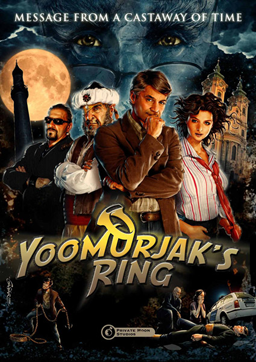
_capsule_fog__medium.png)






